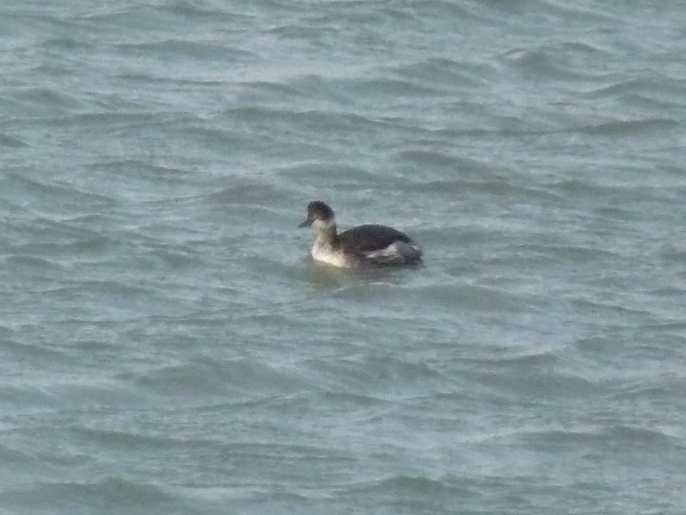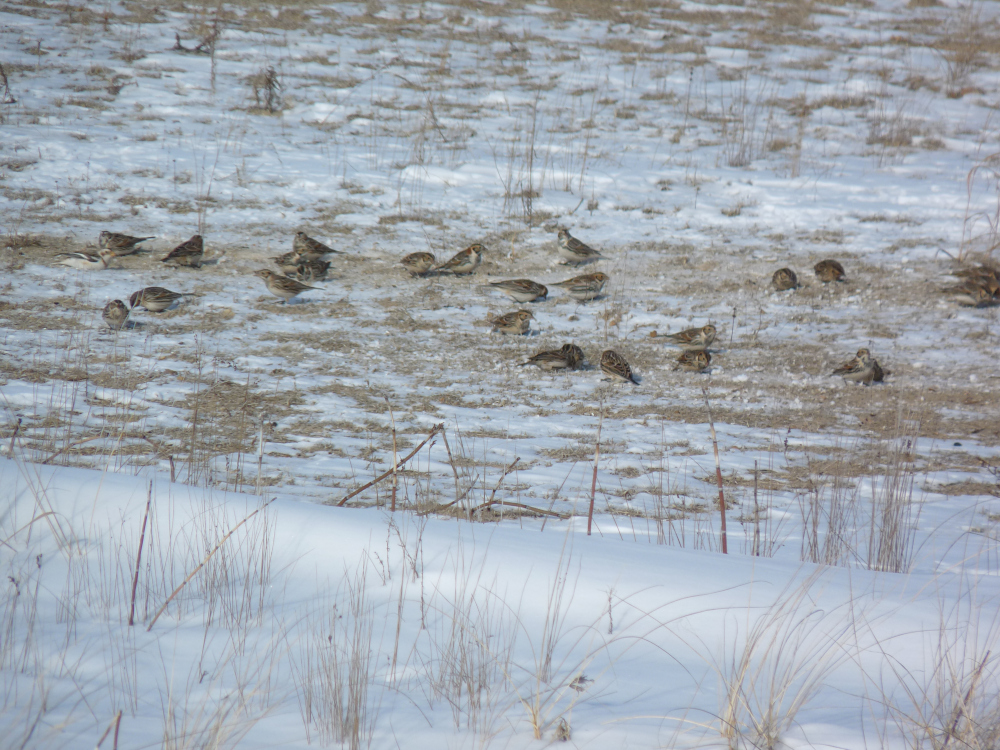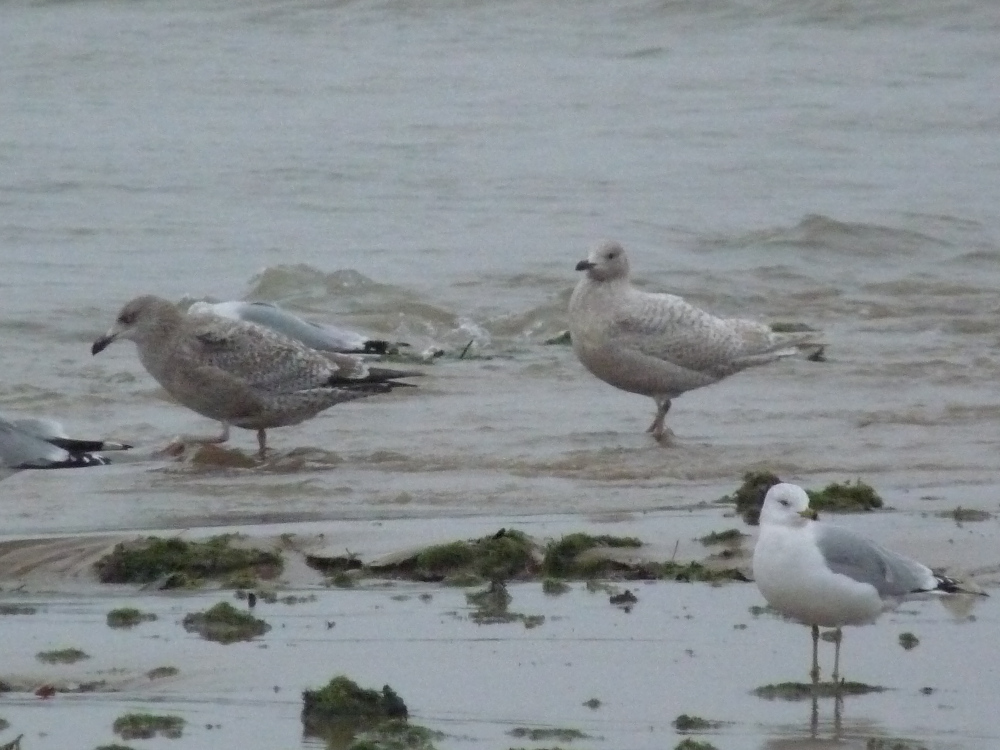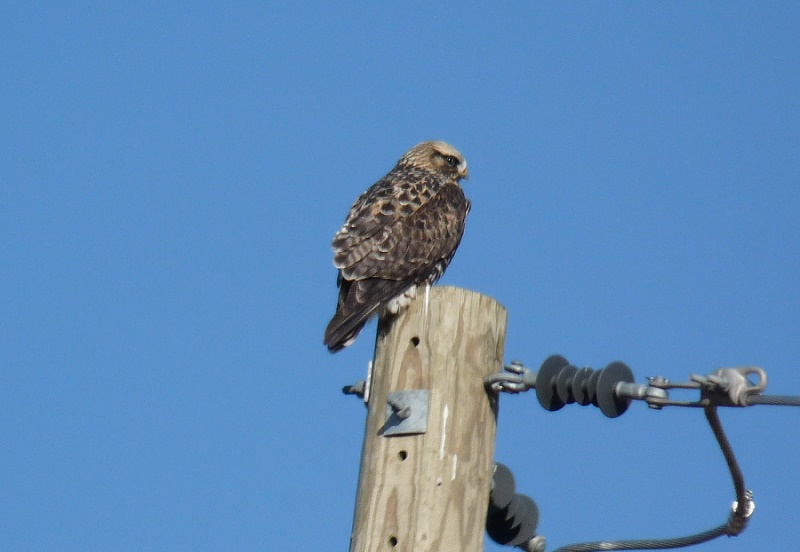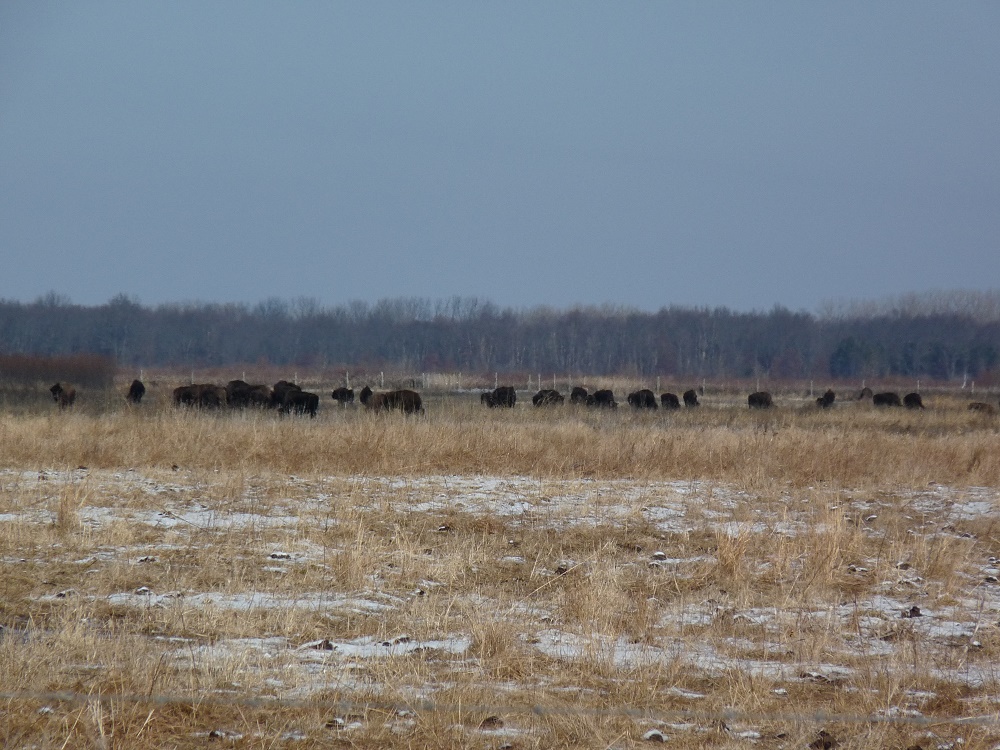As you’ve noticed, I’ve cut back on updating this blog. I have a full-time job that takes up most of my time, and to be frank, I’m repeating the same content in my posts year after year. So, except on rare occasions, I won’t be adding new posts or updating the content pages. You’re welcome to browse past posts and read the content pages, though the content page information may be dated. Thanks!
Author Archives: rhughes
Eared Grebe, February 25, 2024
An obliging Eared Grebe was a pleasant surprise on February 25. The bird was inside the “hook” of the long fishing pier that extends out into Lake Michigan at the east end of the beach. Two Horned Grebes were nearby but the Eared wasn’t associating with them. Late winter Eared Grebes are very rare at Montrose – I’m struggling to remember if I’ve ever seen one there at this time of the year. Is this bird an early migrant or did it overwinter on Lake Michigan? Hard to say.
Lapland Longspurs, January 2024
Lapland Longspurs usually don’t spend the winter at Montrose. We see them during fall migration, but these birds almost always continue moving south and are gone by late December. In mid January 2024, a group of Lapland Longspurs showed up in the Dunes and was still there as of January 21. The group varied in size from about 45 to over 100 birds. They preferred the open area on the southwest side of the Dunes, feeding on seeds on the wind blown sand and snow. A few Snow Buntings and Horned Larks, both also rare at Montrose in the winter, often joined them. This association of field loving passerines is a regular winter sight along northern Illinois roadsides and in Illinois farm fields. Also of note is that the longspurs and Snow Buntings would sometimes fly up to and roost in the tops of tall trees, at least for a little while. This behavior was usually stimulated by an American Kestrel or other raptor flying over the Dunes or making a pass at the birds.
To look for the Lap flock, scan the large open area on the southwest side of the Dunes. The birds have been easy to spot on the snow covered field, and can be tame and approachable while looking for food.
January 13, 2024
The middle of January is about the slowest time of the year for birding at Montrose. If you see 20 species on a visit you’re doing very well. January 13, 2024 proved to be the best mid winter day of birding I’ve experienced at Montrose. I tallied 32 species in a couple hours of birding, and 41 species were reported to eBird by all observers for the day. My highlights include
Iceland Gull
Long-tailed Duck
Long-eared Owl
Northern Harrier
American Pipit
Lapland Longspur
Snow Bunting
Horned Lark
Orange-crowned Warbler
Common Grackle
Fox Sparrow
Savannah Sparrow
Some of these birds were likely driven south by an approaching Artic cold front. The temperature on January 13 was in the 20s, but dropped below zero overnight and is expected to stay in this range for several days. Extreme weather events like this often produce extreme birding events.
Snowy Owl Bust
Fall Snowy Owls at Montrose are usually a harbinger of more to come over the winter, so when one showed up in the Dunes in November 2023, some of us thought this might be a flight year for them. A check of eBird shows that, as of January 1, 2024, not another has been seen at Montrose, in Chicago, or anywhere in Illinois for that matter. The November bird was a one off fluke and not part of a hoped for larger movement into the Midwest. We’ll have to spend our winter birding time looking for gulls or Red Crossbills, which are irrupting into Illinois.
Winter Birding Ideas – The Kankakee Sands
The Kankakee Sands is a complex of prairie and wetland habitat owned and managed by the Indiana chapter of The Nature Conservancy. Birding is excellent all year round. Summer is the season to see the grassland specialties like Henslow’s and Grasshopper Sparrows and Dickcissel, which are hard to miss and fill the air with their songs. Winter brings a different set of visitors, most notably birds of prey like Rough-legged Hawk, Northern Harrier, and Short-eared Owl (the owls are best seen at dusk). The main mammal claim to fame is a herd of about 70 American Bison. These iconic North American animals were introduced to the Sands in 2016 and play an important role in maintaining the integrity of the grasslands.
How to Bird The Kankakee Sands (and look for Bison)
The Kankakee Sands is about an hour and a half due south of Chicago off US41 in eastern Newton County, Indiana. Morocco is the nearest large town and lies about six miles to the south. When I bird the Sands, I drive slowly down county road 200W between county road 675N on the north and 225N on the south, looking and listening for wildlife. These roads don’t get a lot of traffic, especially in winter, and are generally safe to drive. County roads 500N and 400N east of US41 can also be productive for birds of prey in winter. Note that in winter the roads might not be drivable because of heavy snow.
The Bison are best viewed from the Bison Viewing Area west of US41. To reach it, take 400W south from 400N for about half a mile. Look for a gravel road that goes east and take it to the parking lot. Walk up to the top of the rise and start scanning. The Bison are usually to the south, east, or northeast. You can usually see them with your eyes but binoculars make the experience more enjoyable. This is also an excellent place and vantage point to look for Rough-legged Hawks, Northern Harriers, and other winter birds of prey. I’ve included a link to my January 9, 2021 Kankakee Sands eBird checklist to give you an idea of what I saw on that visit.
To read more about The Nature Conservancy’s efforts at Kankakee Sands, go to this site – Efroymson Restoration at Kankakee Sands.
Kankakee Sands eBird Checklist
January 9, 2021

